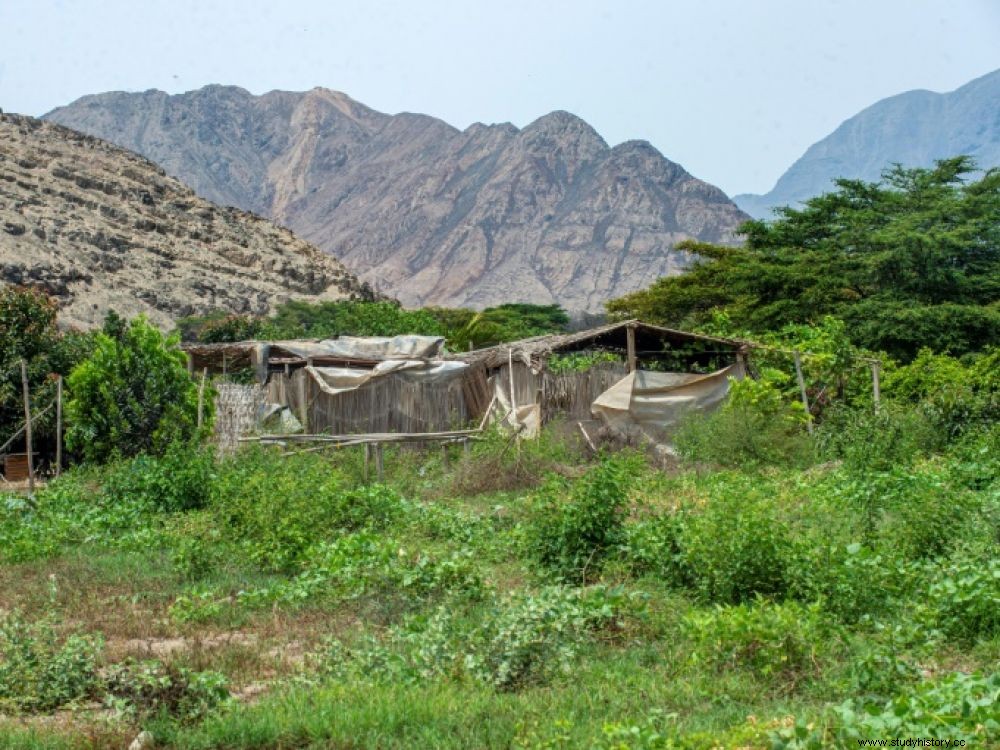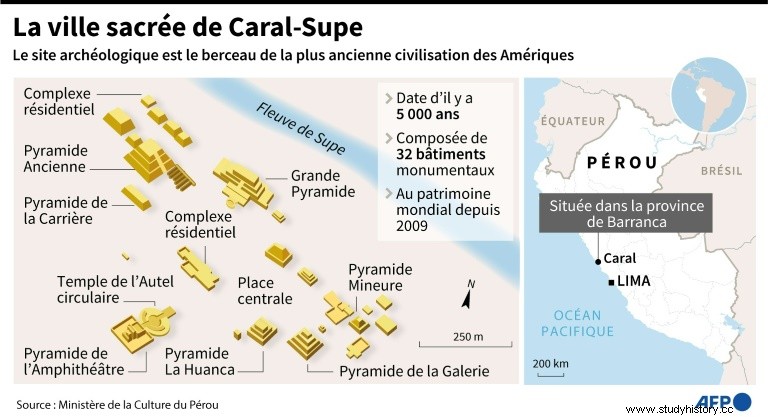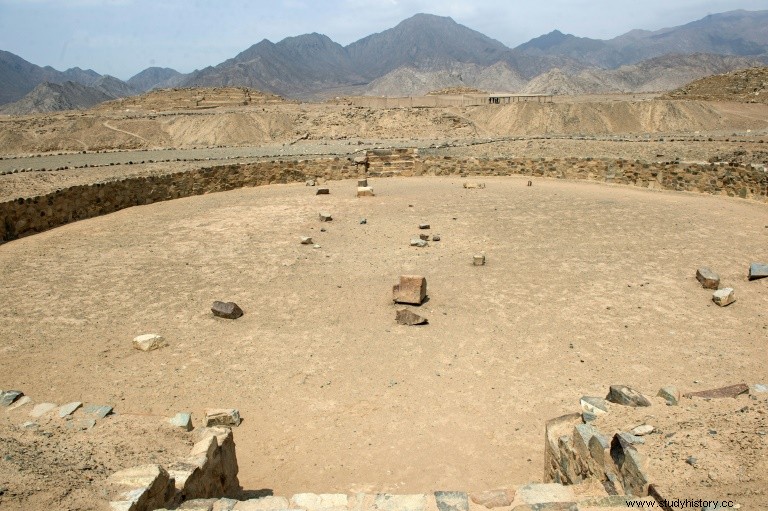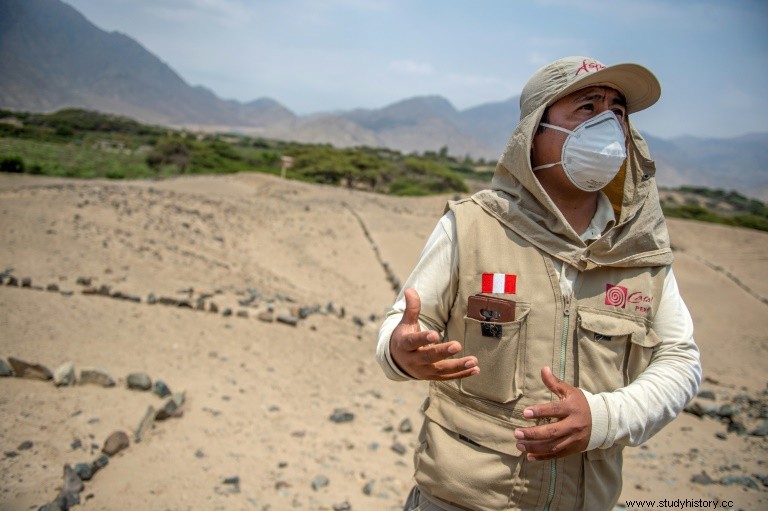Deserted by archaeologists during the lockdown, the Peruvian archaeological city of Caral, cradle of a 5,000-year-old civilization, has been invaded by rural workers claiming land.

A precarious dwelling built illegally by peasants at the Caral archaeological site in Supe, Peru, on January 13, 2021
The Peruvian archaeological city of Caral, cradle of a 5,000-year-old civilization, is also suffering the consequences of the coronavirus pandemic:deserted by archaeologists during confinement, it has been invaded by rural workers who claim land, while that the Scientific Director, Ruth Shady, has received threats.
"It is a pride of Peru, an imposing civilization that flourished over 5,000 years ago"
The sacred city occupies an area of 66 hectares, dominated by seven stone pyramids, in the middle of the desert, 182 km north of Lima and about twenty km from the Pacific coast. Cinderblock or straw huts are now visible on the site. These illegal occupations began during the confinement decreed in Peru between March and June 2020 in an attempt to slow the spread of the Covid-19 epidemic, a team of archaeologists on site told AFP.
"Villagers occupy the site which is state property. They use the land for sowing" , explains Daniel Mayta, a 36-year-old researcher, who is not frustrated by the danger hanging over the city, which has been listed as a UNESCO World Heritage Site since 2009.
"We are very worried, and we feel powerless to see that all this could be lost, all these traces of the past that we see here. It is a pride of Peru, an imposing civilization that flourished ago over 5,000 years", adds Ricarte Morocho, the site's lawyer.

The sacred city of Caral-Supe (AFP - Nicolas RAMALLO)
The Caral civilization, which flourished between 3000 and 1800 B.C., is the oldest in America. Contemporary of the Mesopotamian and Egyptian civilizations, it appeared on this arid plateau 45 centuries before the Inca civilization.
But that hardly moved the occupants who took advantage of the absence of the archaeologists and the weak police presence during the confinement to monopolize ten hectares of the site, build precarious huts and sow fruit trees and beans.
“We went through legal procedures, discussions to try to reach an agreement, but the families refused. They do not want to leave despite the fact that they were told that it was 'a world heritage and that what they do is punishable by imprisonment' , says Daniel Mayta.
"Kill us"
The scientific director of the Caral site, archaeologist Ruth Shady, who has led the excavations since 1996, says that behind the occupants are land smugglers.

View of an amphitheater at the Caral archaeological complex in Supe, Peru, January 13, 2021 (AFP - ERNESTO BENAVIDES)
"We are receiving threats from people who are taking advantage of the conditions created by the pandemic to occupy archaeological sites. They are occupying the land, building illegally, driving heavy vehicles through the land and destroying what is in their path" , she explains to AFP.
"One day they called our lawyer and told him they were going to kill him and me and bury us five meters underground" , denounces this former director of the National Museum of Archaeology, Anthropology and History of Peru.
Ruth Shady, 74, has spent the past 25 years working at Caral trying to trace the history of this civilization. She is particularly interested in the anti-seismic construction techniques developed, which have allowed buildings 5,000 years old to still stand.
The buildings had, at their base, baskets called "shicras", filled with stones, which dissipated the telluric movements and prevented the collapse of the building, explains the researcher.

An archaeologist at the archaeological site of Caral in Supe, Peru, on January 13, 2021 (AFP - ERNESTO BENAVIDES)
The threats forced Ruth Shady to live in Lima under protection. Last week, the Peruvian government awarded her the Order of Merit for services to the nation for her work in Caral.
"We do everything in our power to ensure that neither your health nor your life is endangered by the threats you receive" , assured Peruvian President Francisco Sagasti during the award ceremony.
Like all other archaeological sites in Peru, the Caral site reopened to tourists in October. But the latter remain rare due to the consequences of the Covid-19 pandemic.
